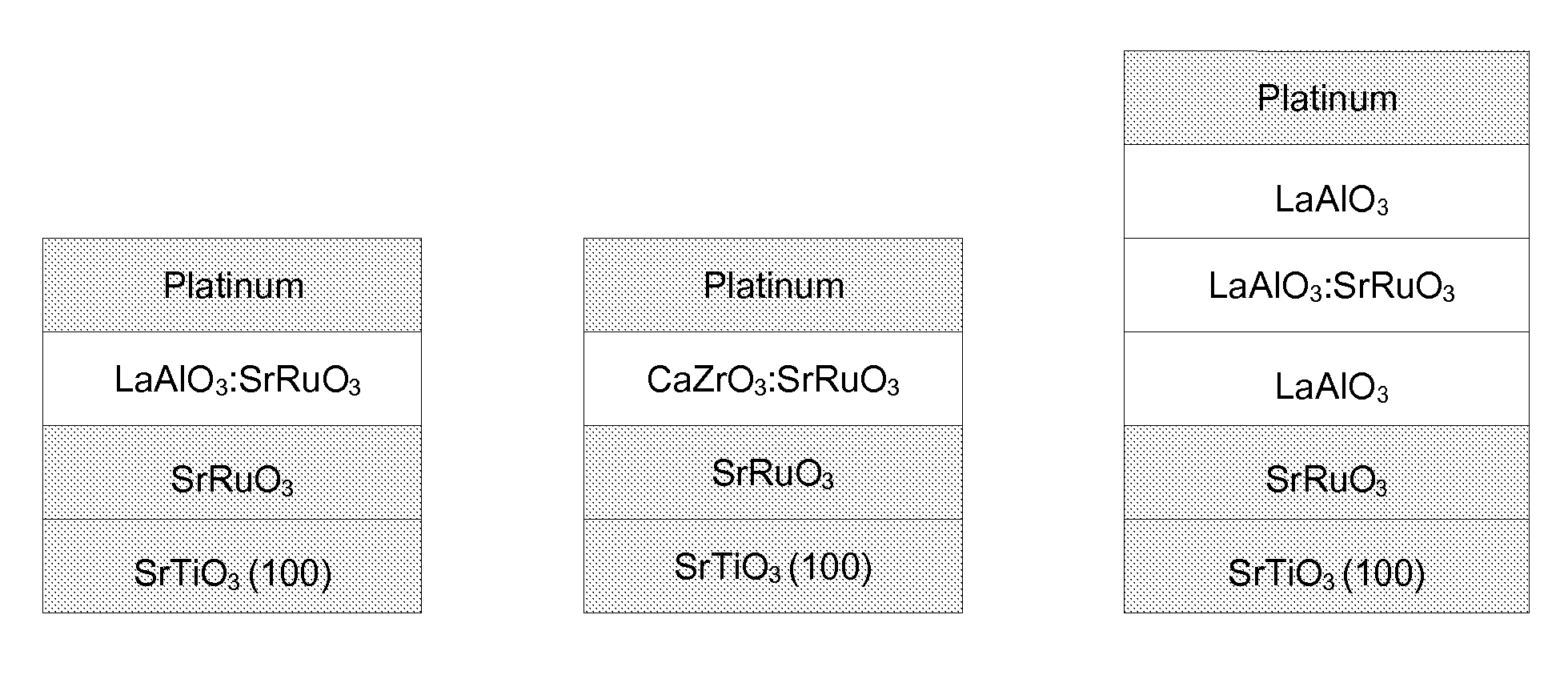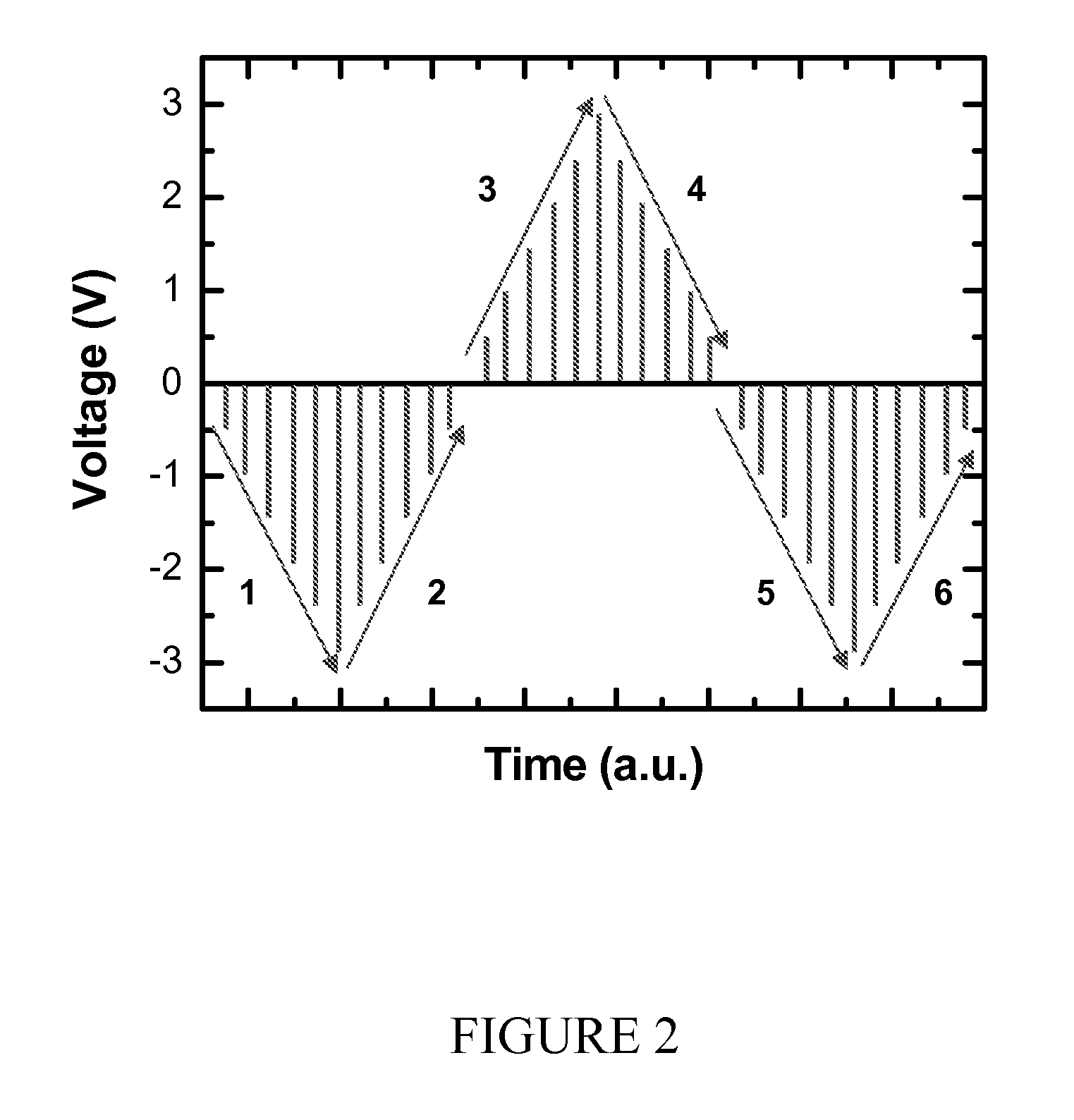Non-volatile resistance-switching oxide thin film devices
a technology of resistance switching oxide and thin film, which is applied in the direction of inorganic chemistry, electrical equipment, natural mineral layered products, etc., can solve the problems of device completely losing its capacitance state, requiring relatively large amounts of electrical power, and the art of reversible variation of electrical performan
- Summary
- Abstract
- Description
- Claims
- Application Information
AI Technical Summary
Problems solved by technology
Method used
Image
Examples
Embodiment Construction
[0074]The present invention relates to two-point resistance-switching oxide layers, semiconductor devices incorporating same, and methods for making such oxide layers and devices. Resistance-switching oxide layers, and devices incorporating same, are suitable for various non-volatile memory applications. Under a resistance-switching regime, when an appropriate voltage pulse is applied, the resistance of the oxide layer can be increased and remain so until application of another appropriate voltage pulse, typically of the opposite polarity, which returns the resistance to the low value. Devices incorporating such resistance-switching oxide layers should be switchable at a modest voltage, preferably below about 3 V.
[0075]Resistance-switching oxide films, according to the certain preferred aspects of the present invention, include at least about 60 atomic percent of an insulator oxide matrix having a conducting material dopant in an amount up to about 40 atomic percent. The matrix (sol...
PUM
| Property | Measurement | Unit |
|---|---|---|
| total thickness | aaaaa | aaaaa |
| thickness | aaaaa | aaaaa |
| set-reset-voltage | aaaaa | aaaaa |
Abstract
Description
Claims
Application Information
 Login to View More
Login to View More - R&D
- Intellectual Property
- Life Sciences
- Materials
- Tech Scout
- Unparalleled Data Quality
- Higher Quality Content
- 60% Fewer Hallucinations
Browse by: Latest US Patents, China's latest patents, Technical Efficacy Thesaurus, Application Domain, Technology Topic, Popular Technical Reports.
© 2025 PatSnap. All rights reserved.Legal|Privacy policy|Modern Slavery Act Transparency Statement|Sitemap|About US| Contact US: help@patsnap.com



